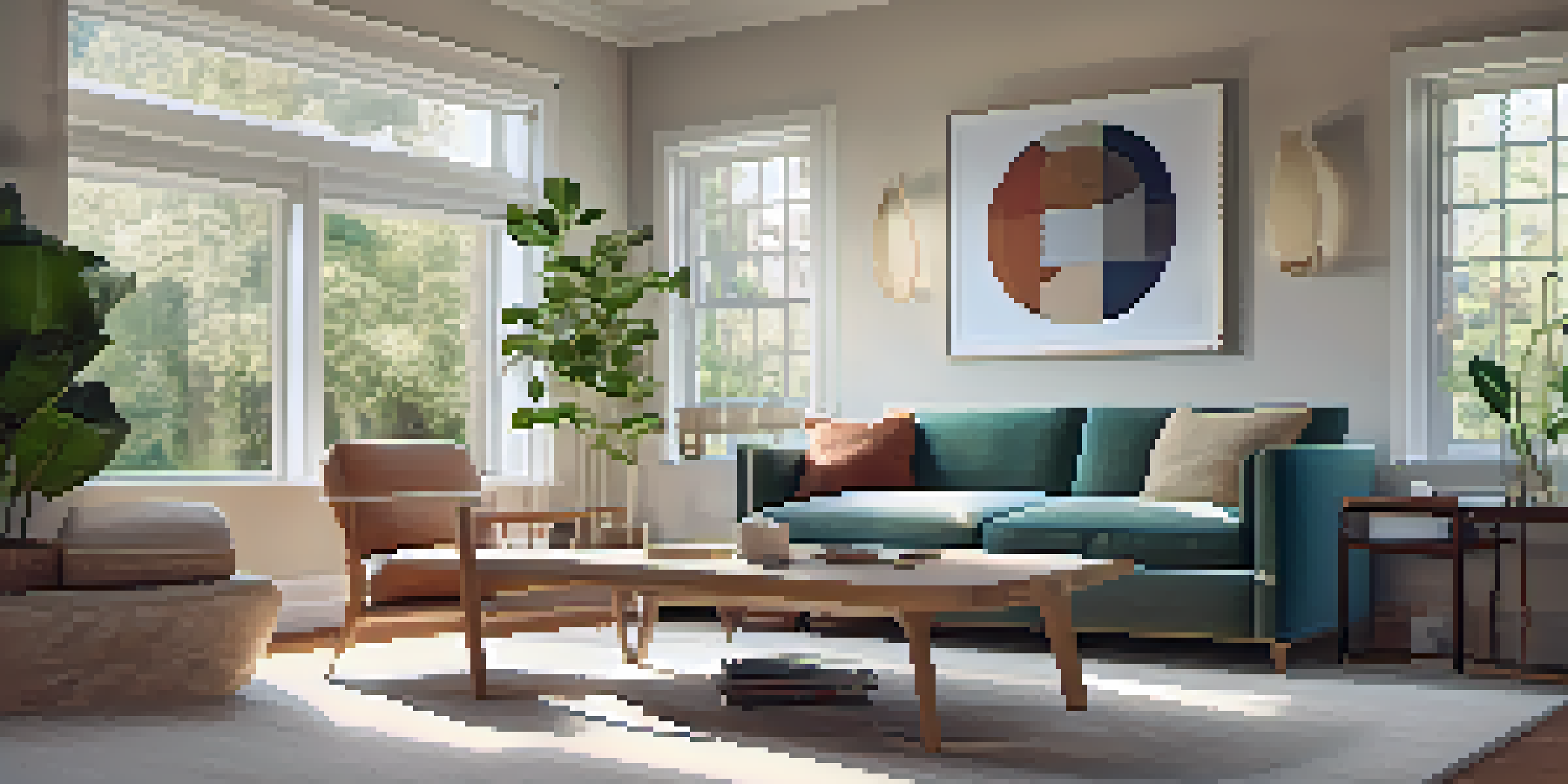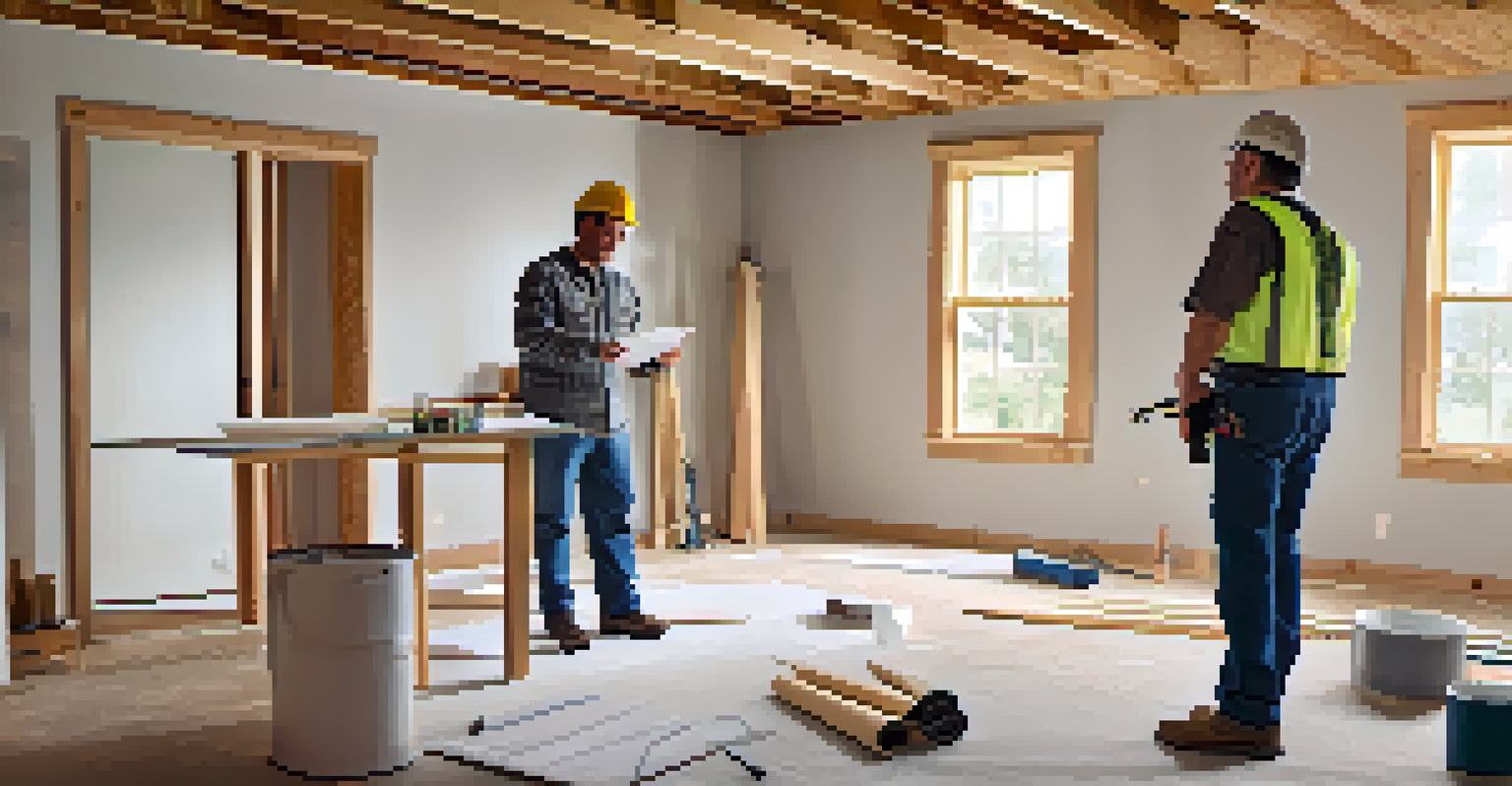Not Considering Noise Levels in Home Renovation

Understanding Noise Levels and Their Impact
When undertaking home renovations, it's easy to overlook noise levels. However, noise can significantly affect your living environment, impacting your comfort and peace of mind. Imagine trying to relax in your newly renovated space only to be interrupted by constant, unwanted sounds.
Noise is a part of life, but it doesn't have to dominate your living space.
Noise levels can vary based on the materials used, the layout of the home, and even the construction methods employed. For example, hardwood floors might amplify sounds, while carpets can help to absorb them. Understanding these nuances is crucial for creating a harmonious living space.
Moreover, excessive noise can lead to stress and decreased productivity, particularly if you're working from home. By recognizing the potential for noise disruptions, you can make informed decisions that enhance both comfort and functionality.
The Role of Building Materials in Noise Control
The materials you choose during renovations have a direct impact on noise levels. For instance, using soundproof drywall can help minimize noise transfer between rooms, creating a quieter home environment. On the other hand, opting for hollow-core doors might increase sound transmission.

Consider materials that are designed for sound absorption, like acoustic panels or carpets, especially in high-traffic areas like living rooms or home offices. These choices not only enhance aesthetics but also contribute to a more peaceful atmosphere.
Noise Affects Comfort and Peace
Excessive noise during renovations can disrupt your comfort and overall living experience.
Ultimately, selecting the right materials can make a world of difference, transforming your space into a serene retreat rather than a noisy hub. It's all about balancing style with functionality to meet your needs.
Planning for Noise Levels During Renovation
Before beginning any renovation, it's essential to plan for potential noise issues. This means considering when and how the work will be done, as well as how it will affect your daily life. For example, major renovations might be best scheduled during weekends or holidays when you're less likely to be home.
Good design is about making spaces that are not only beautiful but also functional and comfortable.
Communication with contractors is key. Discuss your concerns about noise levels upfront, and ask about their strategies for minimizing disruptions. A reputable contractor will have experience dealing with noise and can offer solutions tailored to your situation.
By planning ahead, you can mitigate the impact of noise on your daily routine, ensuring a smoother renovation experience. After all, a little foresight can go a long way in maintaining tranquility in your home.
The Importance of Soundproofing Techniques
Incorporating soundproofing techniques during renovations is a proactive way to control noise levels. This can include adding insulation in walls, installing double-glazed windows, or sealing gaps around doors and windows to prevent sound leakage. These measures can significantly enhance your home's auditory comfort.
Think of soundproofing as an investment in your home's value and your quality of life. A quieter home not only improves your living experience but can also be a selling point should you decide to move in the future.
Choose Materials for Sound Control
Selecting the right building materials, like soundproof drywall and acoustic panels, can significantly minimize noise levels in your home.
Moreover, soundproofing can create a more productive work-from-home environment, allowing you to focus without distractions. It's a win-win situation that pays dividends long after the renovation is complete.
Choosing the Right Time for Renovations
Timing is everything when it comes to renovations and noise levels. If you live in a densely populated area, consider scheduling noisy work during hours when neighbors are least likely to be disturbed. This shows consideration for those around you and can help maintain good relationships with your neighbors.
Additionally, plan your renovations for seasons when you can keep windows closed to minimize outside noise. Winter, for example, can be an ideal time to tackle projects that might otherwise let in unwanted sounds.
Being mindful of when you choose to renovate can make a significant difference in your overall experience. It’s all about creating a balance that works for you and your environment.
Maintaining Peace During Renovation Chaos
Even with the best planning, renovations can still be noisy. To maintain peace during this chaotic time, consider establishing quiet zones in your home. Designating areas away from the renovation site for relaxation or work can provide you with a refuge.
Additionally, use white noise machines or calming music to drown out disruptive sounds. These tools can create a more soothing atmosphere amidst the clatter, helping to keep stress levels in check.
Plan Renovations for Less Disruption
Carefully timing your renovations and establishing quiet zones can help maintain tranquility during the chaos of home improvements.
Remember, it's temporary, and maintaining a positive mindset can make all the difference. Focus on the end result and the comfort that awaits you once the dust settles.
Post-Renovation: Evaluating Noise Levels
Once your renovation is complete, take the time to evaluate the noise levels in your newly updated space. Are there unexpected echoes or sounds that weren't present before? This is an important step, as it helps you identify areas that might still need attention.
Consider conducting a sound test by moving around your home and noting any particularly loud areas. This exercise can help you determine if additional soundproofing measures are needed to achieve your desired tranquility.

Ultimately, ensuring a peaceful environment post-renovation is about continuous improvement. Don’t hesitate to make adjustments as needed for optimal comfort in your home.